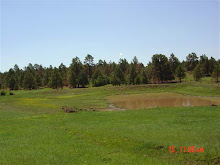Marcellus Shale: Spills of drilling chemicals worry experts
By Krisy Gashler
kgathler@gannett.com
Staff Writer
DRYDEN -- Two chemists and an endocrinologist spoke Tuesday night about the science and potential health effects of unconventional natural gas drilling to roughly 100 people at Tompkins Cortland Community College.
The lecture was sponsored by Shaleshock, a citizens' group that opposes hydraulic fracturing in the Marcellus Shale without greater study and more regulatory oversight.
Decisions about gas drilling will be guided by the state's experience with environmental cleanups such as Love Canal in Buffalo, but also by an understanding of how the country's current energy sources affect our foreign policy, said William Klepack, a Dryden physician and medical director for the Tompkins County Health Department.
Even with no additional chemicals added by gas companies, the water that flows back from hydro-fracked wells has enough heavy metals -- and often radioactivity -- to be classified as hazardous waste, said Ron Bishop, a biochemist at SUNY Oneonta who has also worked in construction with gas drillers.
But because of state and federal exemptions granted to the natural gas industry, the water does not have to be tested or handled as carefully as it would be if it were created by another industry, Bishop said. In some parts of the Marcellus Shale, radioactive materials occur naturally at levels 250 times the level normally regulated by environmental agencies -- but natural gas drillers aren't even required to test for radioactivity, he said.
"Call your legislators," he said.
The precautionary principle in science and medicine asserts that if an action could cause severe, irreversible harm, the burden of proof is on those who want to carry out the action, said Thomas Shelley, a chemist and chemical safety and hazardous materials specialist. Based on this principle, the European Union has banned use of hundreds of chemicals that are used across the U.S., Shelley said.
The state Department of Environmental Conservation's draft regulations on gas drilling list 257 distinct chemicals that could be used in hydraulic fracturing; compound-specific toxicity data on many of those chemicals and their effects on human health and the environment are "very limited," he said.
"We're looking at a vast unknown," Shelley said. "Remember the precautionary principle? We don't see any of it here."
Of the fluid used to fracture a natural gas well to release the gas, 99.5 percent is water and sand, Shelley said. However, because one well can require 3 to 5 million gallons of water, that equates to 10 to 30 tons of chemicals, Bishop said.
The risk with chemical use is not from the actual hydrofracking process but from transport and disposal, Bishop said. "Hydrofracturing is not the boogeyman under the bed; it is not going to hurt you," Bishop said. "You're more likely to have problems with transporting the 10 to 30 tons of chemicals to the drilling site." {I have to strongly disagree with this comment about hydraulic fracturing. While I think that we often overlook the outright hazards of these chemicals being transported, the fracturing process that happens in shale below the ground cannot be controlled and poses risks that no one fully understands.}
That kind of accident has occurred, Shelley said, citing an incident last March when a tanker truck filled with hydrofluoric acid overturned in Pennsylvania, requiring emergency crews to close the road and evacuate 5,000 residents. More>>>






0 comments:
Post a Comment